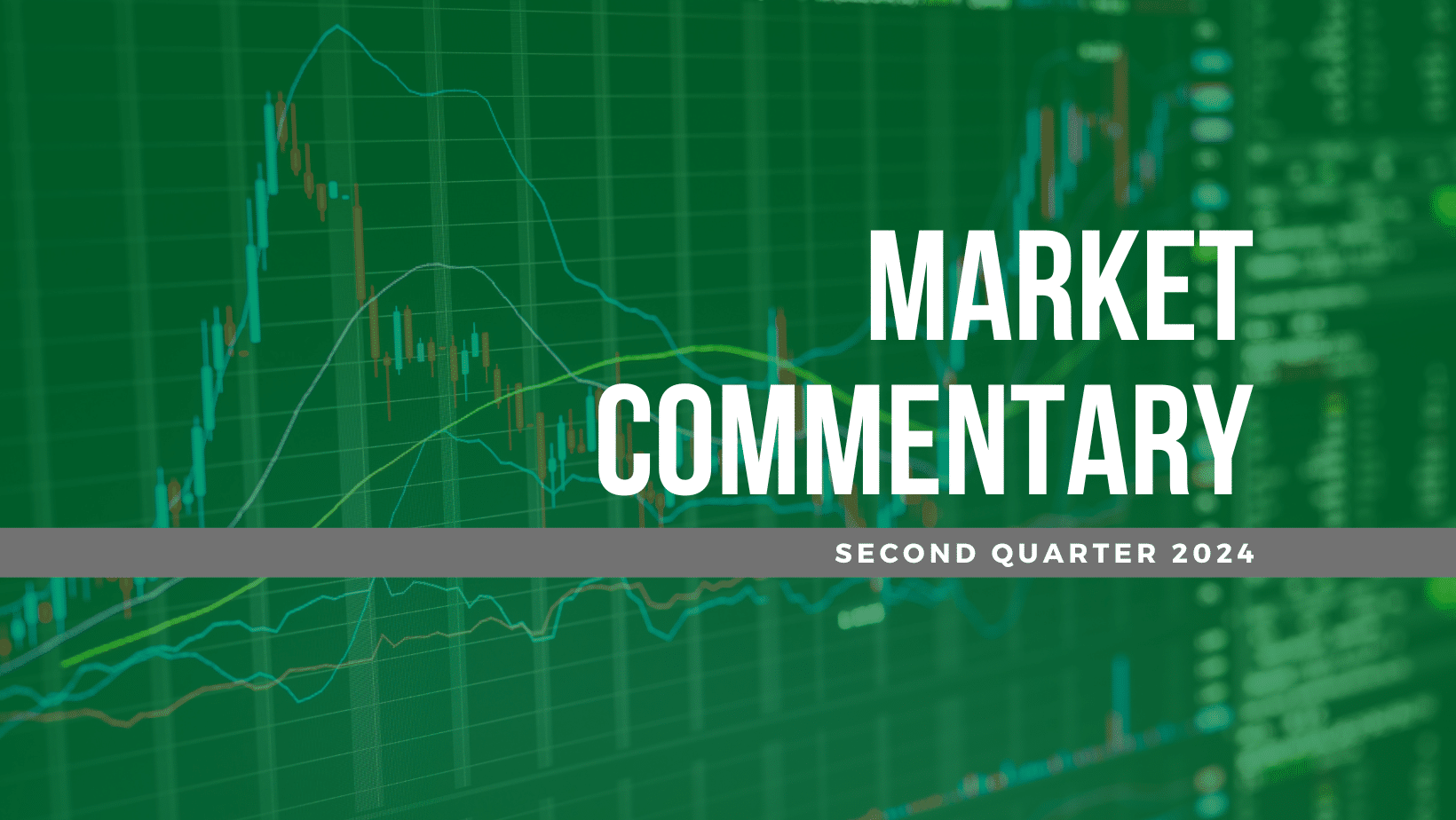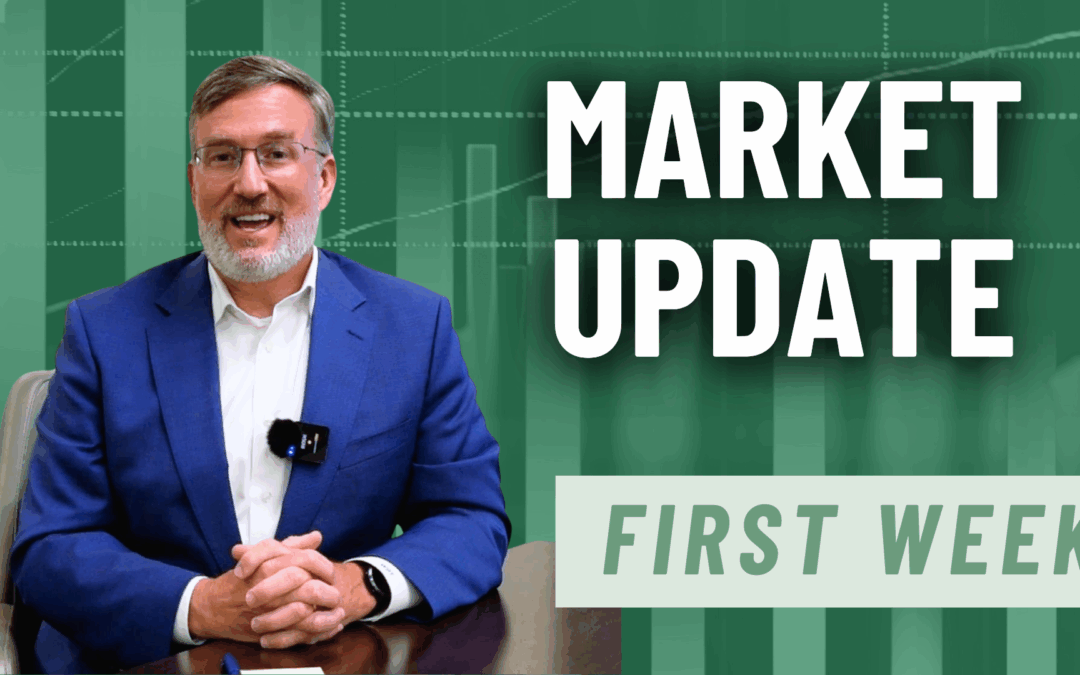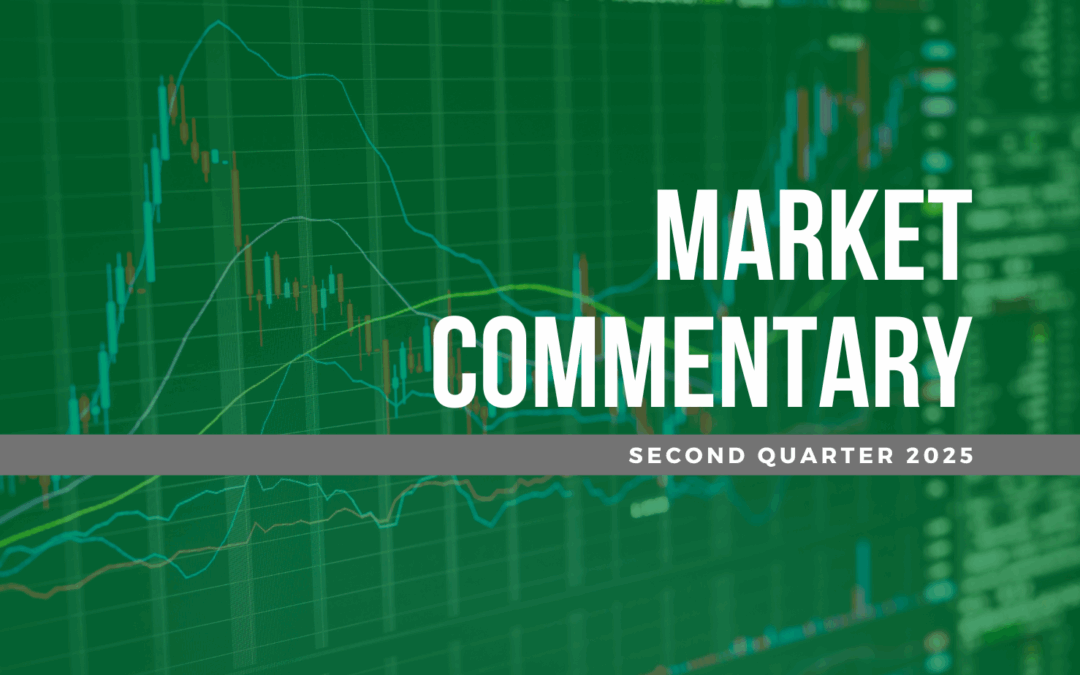Economic Overview
By Dr. Mark Pyles
There was a historical event on September 18th, when the Fed reduced the Federal Funds Rate by 50BP, down to a range of 4.75% – 5.00%. By all expectations, this was the first cut of many to occur over the next several months and ends one of the most aggressive and sustained hiking cycles in market history. At such a time, it is perhaps warranted to review the cause and effect of such a monetary cycle.
Cause
The “cause” of the hiking cycle is now well-documented.
COVID was an unprecedented period, and it is with perfect hindsight we can now say that excess stimulus was pumped into our economy at a time when demand was massively constrained. This, combined with significant pandemic-related supply chain issues, led to very high inflation levels. The headline consumer pricing index (CPI) peaked at 9.1% year-over-year (YoY) in June of 2022, and maintained an average rate of 6.7% from April 2021 to May 2023. The Fed-preferred measure of core personal consumption expenditures (PCE) value was less extreme, but the respective values of 5.7% (in Feb 2022) and 4.8% (average from April 2021 through May 2021) followed a similar pattern. As a reminder, the Fed’s clearly stated goal is 2% in core PCE.
In the days coming out of COVID, it was believed, or at least hoped, that these levels of inflation would be transitory, a phrase that will now forever live in infamy by association. In the November 2021 Fed meeting, Chair Powell retired the use of the word and gave very clear signals that financial tightening was coming. And come it did, with the Fed Funds Rate being lifted from the floor (0.00% – 0.25%) all the way to a 5.50% upper limit in a brisk pace from March 2022 to July 2023. It remained at that meaningfully restrictive level until just a few weeks ago.
Lying in the background of all of this is the fact that the Federal Reserve balance sheet has been allowed to “run-off” from the peak of approximately $9T in April of 2022 to the current level of around $7T. So, $2T of the balance sheet removed and 525 basis points of interest rate advancement represents, to say the least, a great deal of tightening of financial conditions.
And Effect
So, that leads to the “effects”? Did the hiking cycle complete the objective?
The Federal Open Market Committee (FOMC) has two primary goals: (1) maintain price stability, and (2) seek full employment. If successful in these two areas, the result should be sustainable economic growth. As inflation ramped aggressively throughout 2021, a resulting effect was that real GDP growth was sluggish throughout the first half of 2022, with the headline number only averaging 0.35% QoQ annualized over those two quarters. This left markets and consumers fearing a meaningful recessionary period, both in magnitude and duration. However, since those two quarters, the following eight have averaged 2.9% QoQ annualized, with none falling below 1.5%. This is a series of very solid economic growth returns.
In the backdrop of this, inflation has certainly decreased, all the way to the current readings of 2.5% on headline CPI and 2.7% on Core PCE. And the job market? While it is hard to pinpoint exactly the reason, the labor market has consistently outperformed expectations. In the latter stages of 2022, when nearly every economist on the planet was predicting an impending recession, the labor market did not listen to the narrative. In fact, the average increase in nonfarm payrolls from January 2023 through the most recent August 2024 report is 224k jobs. For comparison, the average from 2015-2019 was 190k jobs added. Even this year, when many, including us, were worried that the labor market would finally have to start slowing down – we have seen an average gain of 185k for the first eight months, which is not far out of line from the pre-COVID period average.
So, the Fed, led by Chair Powell, could certainly be forgiven if they are feeling pretty good about the outcome. It seemed that most in the industry felt, at the time, that the Fed waited a bit too long to increase interest rates, but that has now been countered by the majority also likely believing they have waited too long to start reducing. The “soft landing” that many ridiculed as being a slim possibility, has a significant chance of reality.
Perhaps an appropriate analogy would be one of the Fed driving a racecar named the US Economy. Coming up to what certainly appeared to be a dangerous turn, they laid off the brakes (back in 2021) until the very last moment, when most were shouting at them that it was past time. But then, to compensate, when they did go to the brakes, they didn’t just tap them. Rather, they pushed them through the floorboard (in 2022) to slow as quickly as possible. As we all sat in the stands with hands over our eyes waiting for the crash to occur, somehow the car held the line, just fractions off the wall – for what seemed like an eternity (for most of the last year). Somehow, against long odds, the car did not crash, but rather maintained direction until it rolled off the steep bank with a new straight stretch in sight. The Fed has now started to gently accelerate, having somehow not only survived but done so with nary a scratch!
What’s Next
If we stopped right there, life is grand. But it’s hard to do such, as financial markets require thinking as much about the risks to the status as it is to recognize the status in the first place. The current status is as described above – an economic system that seems to be operating at a strong level. However, there are meaningful risks to this assumption to be considered.
We have just recently (as of September 12th) uninverted along the 2Yr/10Yr section of the yield curve, after over two years in negative territory. History tells us that it is during this period that trouble often occurs, and if we do not see a recession following that extended period of inversion, it would be unprecedented. Also, despite the resiliencies of the labor market, it does appear to be slowing. The unemployment rate has risen from a low of 3.4% in early 2023 to the current level of 4.2%. We have also never had a period in which such an increase has happened in this manner without a recession following. It is also troubling to consider the increased magnitude of adjustments in the labor market data. In the annual August adjustment by the Bureau of Labor Statistics (BLS), nearly 800,000 jobs were removed that were originally accounted for in the data. Granted, those revised numbers still paint a positive picture of the labor market. Yet it does make one question what revisions will be on the horizon going forward.
Finally, it must be noted that there are clearly exogenous risks. We are nearing a big election, with little clarity on either the outcome or what any such outcome would mean for economic and financial market influences. Relatedly, we still have geopolitical concerns that could potentially disrupt critical elements of the market, from semiconductor production to oil exploration and development.
As we always do, we try to land the plane on our current thoughts. We feel the remainder of the year will likely be volatile given the exogenous influences, and we do remain wary of all the historical relationships that will be necessarily violated for the all-clear to be sounded. However, the economy continues to be resilient, and we do agree that the soft-landing scenario must now be assumed base case given the data we have at our disposal.
The Stock Market
By Walter Todd
I think the first big roller coaster I rode as a kid was Thunder Road at Carowinds. I remember hearing the tick – tick – tick as the car I was in methodically climbed the initial hill. You get to the crest and then – whoosh – you drop down quickly to start climbing again and then another drop – whoosh. Why, you ask, am I talking about this? Well, I can think of no better analogy for the quarter we just experienced in the stock market. The third quarter started well enough with the S&P moving about 4% higher in the first 11 sessions (tick – tick – tick). Then whoosh – from July 16 to the August 5th low, the market dropped nearly 10%, punctuated by a sharp 4% move lower on that Monday. Then the roller coaster ride climbed another hill, rising 10% from the lows in August before falling 4% to start September. However, when it was all said and done, stock markets around the world proved incredibly resilient, boosted by a Fed rate cut in September, lower oil prices and a seemingly endless appetite for risk assets (like the kid who finishes the ride and says to the parent – “again, again”). Let’s examine the results in a little more detail.
The S&P 500 finished up +5.9%, including dividends. We did see some expansion in the breadth of the market with the Equal-weight S&P 500 Index playing some catch-up and ending the quarter higher by 9.6%. Still, YTD, the S&P 500 has outperformed its more democratic brother (the equal-weight) by nearly 700 basis points (or 7%). Looking beyond the U.S. large-cap space, small-cap stocks (as measured by the S&P 600) also performed well rising 10.1% and are up 9.3% YTD. Outside the U.S., International stocks were broadly higher as well with Developed International Markets jumping 7.4% for the quarter (as measured by the EAFE Index) while Emerging Markets (EM) posted an +8.8% return for the period (measured by the MSCI Emerging Market Index). Late September stimulus by China boosted EM markets. For the YTD period the EAFE and EM were up 13.6% and 17.1%, respectively. Putting the U.S. and International Markets together, the MSCI All-Country World Index (ACWI) finished up by +6.7% for the three-month period and is up 19.1% YTD. Similar to the U.S., we saw the ACWI Equal-weight Index outperform for the quarter, bouncing +12.1%. However, YTD at +13.4% it continues to trail the market-cap weighted ACWI.
During the third quarter, sector returns were broad based (unlike the first half of year) with 10 of 11 sectors positive for the period and 8 of 11 outperforming the broader market (S&P 500). Sector leadership was mixed between defense and offense. Utilities (+19.4%) and Real Estate (+17.2%) finished 1st and 2nd while Industrials (+11.6%), Financials (+10.7%), and Materials (+9.7%), rounded out the top 5. Energy (-2.3%) was the lone loser for the period as oil prices fell. The winners of the first half of the year Technology (+1.6%) and Communication Services (+1.7%) fell back toward the bottom of the pack this time around. For the YTD period, 11 out of 11 sectors were positive, but just 3 out of 11 outperformed the market. There is a new leader YTD, with Utilities (+30.6%) rising to the top, just edging out Technology (+30.3%), followed by Communication Services (+28.8%). Financials (+21.9%) and Industrials (+20.2%) are also up over 20%. Energy is at the bottom YTD, up 8.4%.
We ended this commentary last quarter with the notion that “as we move through the summer and towards the election in the fall, we would not be surprised to see volatility increase.” With a volatility index (VIX) that spiked to 65 (the third highest reading in the past 30 years), we got that prediction correct. However, just as quickly as the volatility increased, it subsided with the VIX ending the quarter at just under 17, and the S&P 500 closing the quarter at a new all-time high. Nonetheless, the structure of the market changed during these periods of stress. We witnessed the emergence of new leadership from different corners of the market including the normally subdued Utilities sector. This rotation in leadership and factor performance lasted through the first week of September before shifting back to a more top-heavy performance to close out the period. To start the fourth quarter, we have seen yet another rotation in the market as Energy jumped from last to first with increased tensions in the Middle East. The message is while price volatility may have calmed down, underneath the surface there is significant churning. For our equity strategies, the best performer for the quarter was our Dividend Income Equity as Value and Dividend factors came back into favor for the period after lagging significantly in the first half of the year. The Large-cap strategy had some individual holdings that were challenged during the period creating a significant headwind for performance in late July and early August, but the portfolio performed well from the lows of August 5 to the end of the quarter. SMID (small and mid-cap) had a tailwind early in the quarter, but positioning toward growth was a headwind late in the period. Our International ETF portfolio performed well, providing solidly positive returns for the quarter.
In many ways, the market and economic backdrop over the past 12 to 24 months has been confounding. Numerous historical patterns and relationships have not held in this time frame and that speaks to the distortions created coming out of a global pandemic with unprecedented monetary and fiscal stimulus. Nonetheless, we continue to look for relative value in the market, mindful as always of the myriad of risks that we face. I used to love roller coasters as a kid, but not so much anymore.
The Bond Market
By John Wiseman
As mentioned in the Economic Overview above, the Federal Reserve “decided to reduce the degree of policy restriction” by lowering its benchmark rate by half a percentage point at its September meeting. The Chairman went to lengths to describe it as a “recalibration” and not to “expect this (50 basis points) to automatically be the new pace.” As is usually the case, market rates were already lower in anticipation of the Federal Reserve having to lower rates. One example was the 2-Year Treasury yield being 160 basis points (1.60%) below the top end of the Fed Funds Rate – the largest inverted difference between these two since the 1980’s. The move lower in yields began in earnest with the July 11th release of the Consumer Price Index for the month of June. This lower-than-expected reading signaled to the bond market that the Federal Reserve could shift its focus from fighting inflation to supporting a cooling employment picture.
Interest rates didn’t look back and finished sharply lower for the quarter. The yield on the 2-Year Treasury Note dropped from 4.75% to 3.64% during Q3 without much resistance. This equates to a 2.85% return. It is lower by 61 basis points since the beginning of the year resulting in a 3.95% return. The 10-Year Treasury Note finished the quarter at 3.78%, which is 62 basis points lower on the quarter and 10 basis points lower for the year. The resulting returns are 5.73% and 3.72% for the quarter and year, respectively. The yield curve, as measured by these two points, finally turned to the traditional positive slope after being inverted for the last two years.
The corporate bond sector continued to outperform its government counterpart for the 3rd quarter and has been firmly ahead since the beginning of the year. Spreads – the amount of yield over Treasuries that investors are compensated for assuming company-specific risk – moved to the highest levels of the year in early August, but rallied to finish nearly unchanged for the quarter and remains lower than the start of the year. The spread of the Bloomberg Intermediate Corporate Index ended the quarter at 79 basis points. The total return of this index was 4.66% for the quarter and 5.71% for the year. Bonds of Utility companies outperformed their Financial and Industrial counterparts by roughly 50 basis points in the 3rd quarter, but Financials remained the leader from the beginning of the year. Lower-rated bonds outperformed higher-rated ones. For example, junk bonds have outperformed investment-grade ones by more than 100 basis points for the year. We continue to reduce our exposure to corporate bonds as they appear to be fully valued at this point in the cycle.
Municipal bonds performed well for the quarter, but remain behind their taxable peers in the fixed income sector. The Bloomberg 5-Year Municipal Index ended the quarterly period with a total return of 3.04% which turned performance since the beginning of the year positive at 2.23%. The ratio of the 5-Year Municipal to Treasury, a measure of relative value, was essentially unchanged at 67%, near the highest levels of the year. With the prospects of increases in tax rates next year, high-quality municipal bonds remain a good option for those in higher tax brackets.
Within our strategies, we have been adding duration, but continue to have slightly less than the benchmark. We had a strong absolute performance for the quarter, but fell a little short of the index which posted its 2nd best quarter performance in 20 years. We remain ahead of the benchmark for the year thanks to having more exposure to corporate bonds.
The information contained within has been obtained from sources believed to be reliable but cannot be guaranteed for accuracy. The opinions expressed are subject to change from time to time and do not constitute a recommendation to purchase or sell any security nor to engage in any particular investment strategy. Investment Advisory Services are offered through Greenwood Capital Associates, LLC, an SEC-registered investment advisor.










